Gallery
At the heart of this unique exhibition are its twenty-five, striking images. Each, is a seamless pairing of the artist own image of DOVO-SEDEE operations, and a historic image sourced from Australia’s national archives. Six of the exhibition’s finished artworks and accompanying personal memoirs feature below.
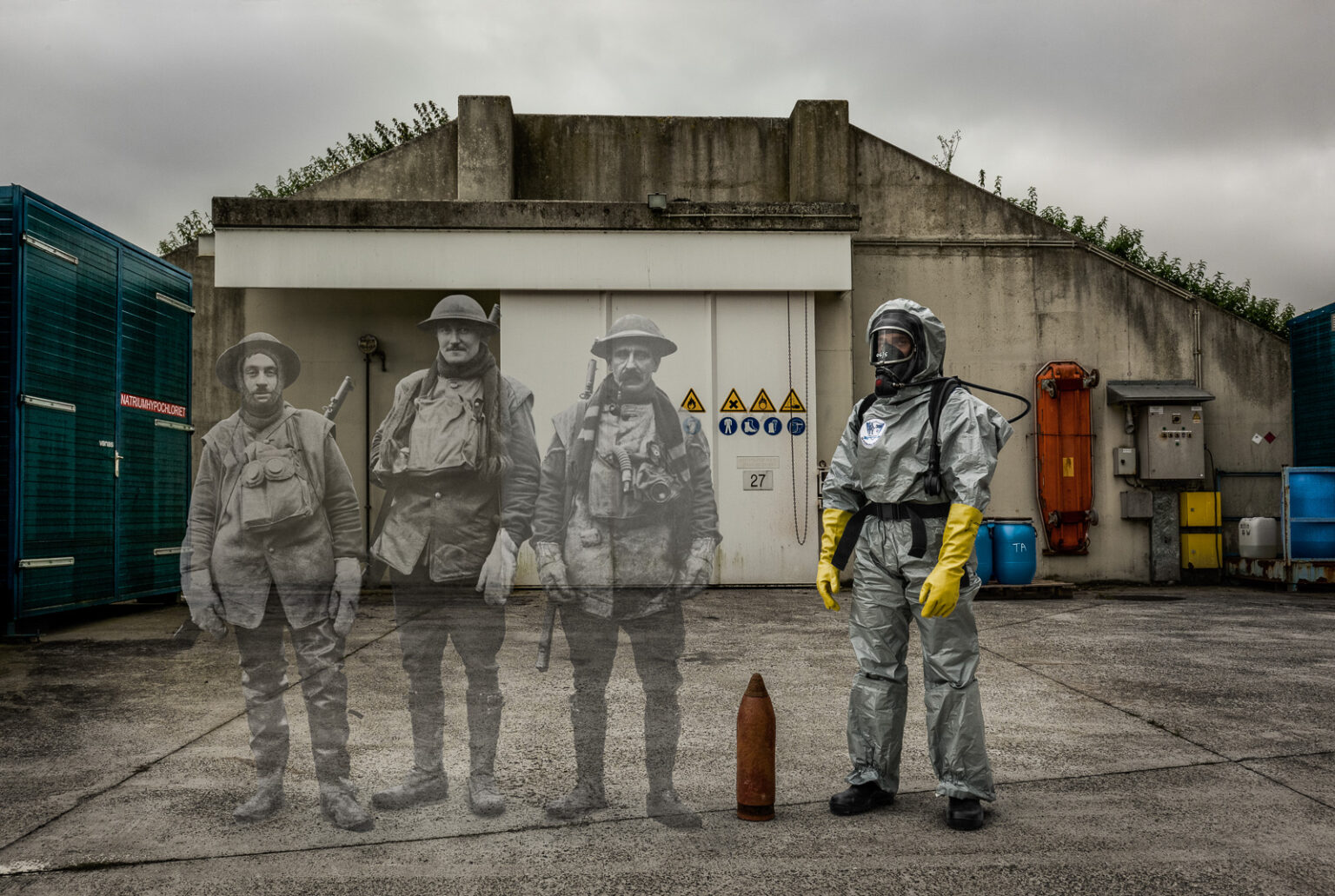
Image Title : #Flanders 6950
Recovered gas munitions are handled and dismantled by personnel wearing full biochemical protection suits. In stark contrast, the Australian soldiers in this image are carrying box respirators, essential for survival in trench warfare. Despite being more than a century old, the toxic contents of gas shells have lost none of their toxicity, all are destroyed under highly controlled conditions.
Elsie Frank, speaking of her son Walter who returned home from the war in 1918
Artist Ian Alderman at the exhibition of Recovering The Past at the In Flanders Fields Museum in 2017. Forty thousand people visited this display.
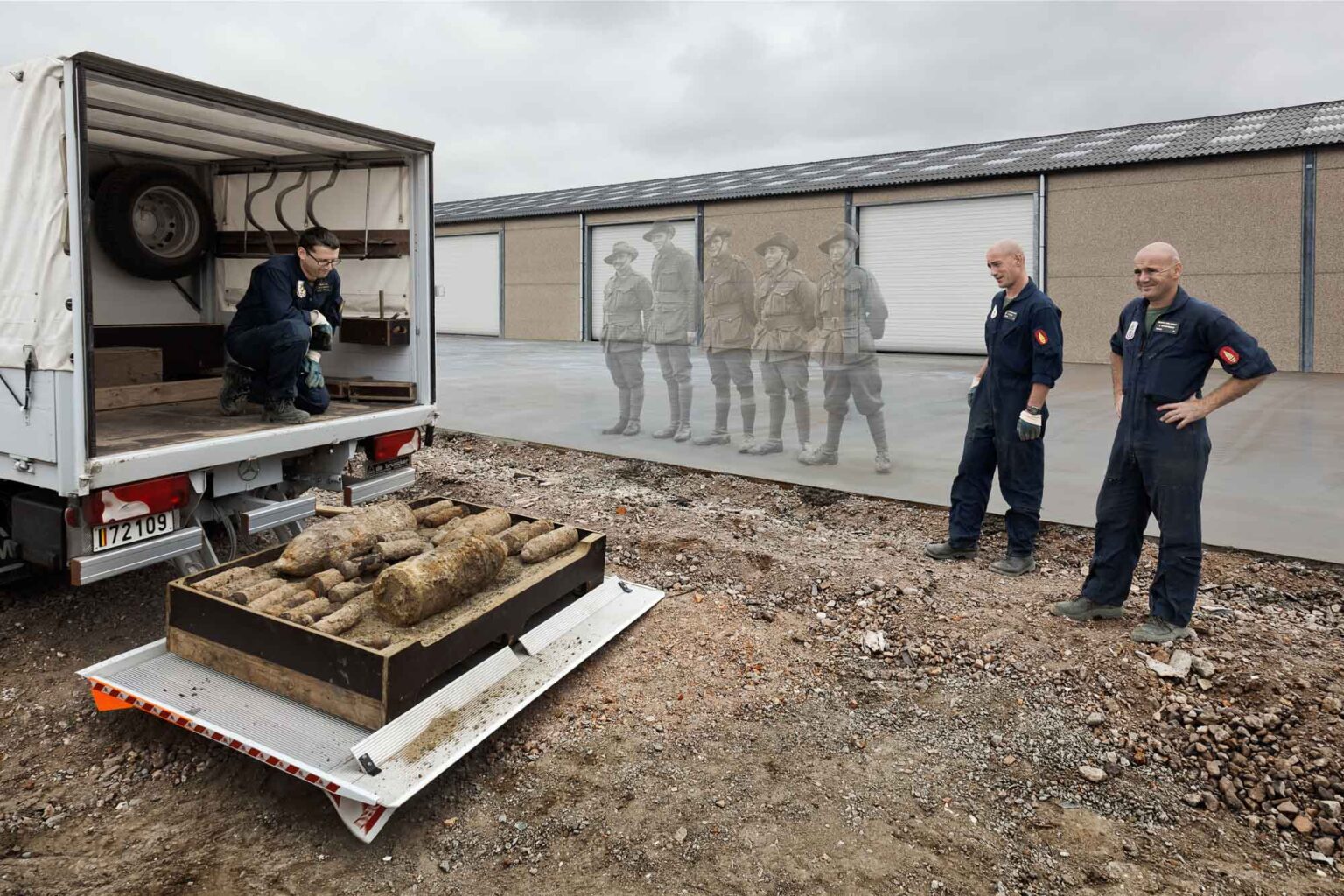
Image Title : #Flanders 1656
The construction of new buildings and road developments carry a particularly high risk to building contractors. Construction sites in West Flanders will occasionally employ civilian contracted detection companies to identify and manage the inevitable unearthing of unexploded ammunition till its recovery by a DOVO-SEDEE team.
“When I go to bed at night, [….] if I allow myself to think of the war I’ll get no sleep for the rest of the night, thinking of the things ‘I should have done’ and what ‘I should not have done.’”
Dudley Jackson, 4th July 1967
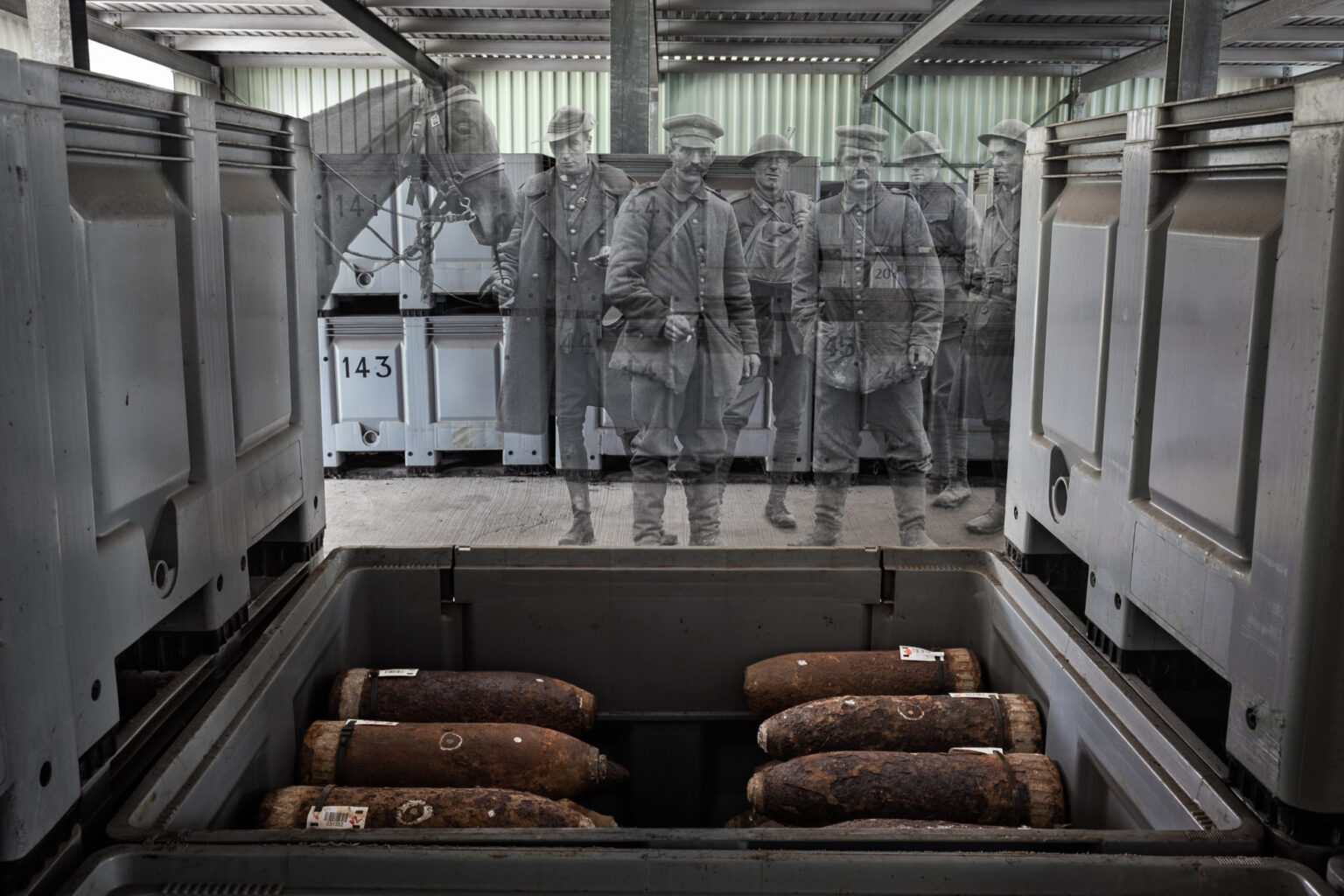
Image Title : #Flanders 2040
Crate number 143 of Great War vintage ammunition awaiting its destruction. Recovered from land once the battlefields of the Great War, and a sobering indication of the scale of the problem.
”Australia’s greatest legacy is that left her by the soldiers who never returned – the dead soldiers fatherless children”
Mr P Board – chairman of the Soldiers Children’s Educational Board, August 1927
July 2017, and British Prime Minister Theresa May visits Recovering The Past, providing artist Ian Alderman (far left) an opportunity to discuss the work with a national leader.
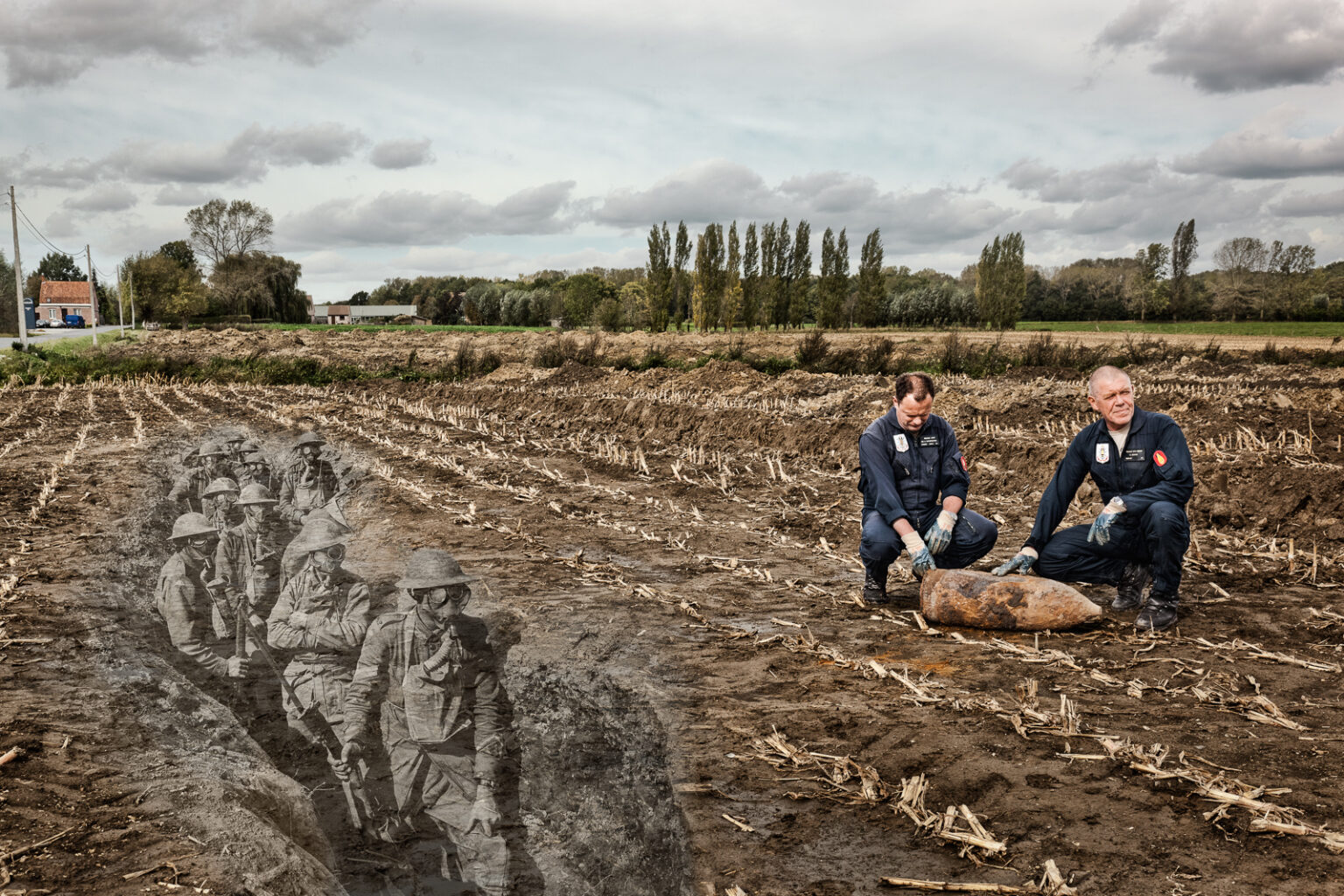
Image Title : #Flanders 0825
Farming practices in this seemingly innocuous landscape have unearthed this 8 inch British high-explosive shell weighing 90kg. Termed a ‘dud’, it is a shell that was fired but failed to explode.
“My mind is a blank – this will break my wife’s heart.”
Zeehan and Dundas Herald, Tas, Thursday 18th November 1920
Words on the note found with the revolver Evan Joseph Derby – of Canning Street, Melbourne – used to take his own life. Suffering from depression having been wounded and twice gassed in the war, Evan left a widow and four children.
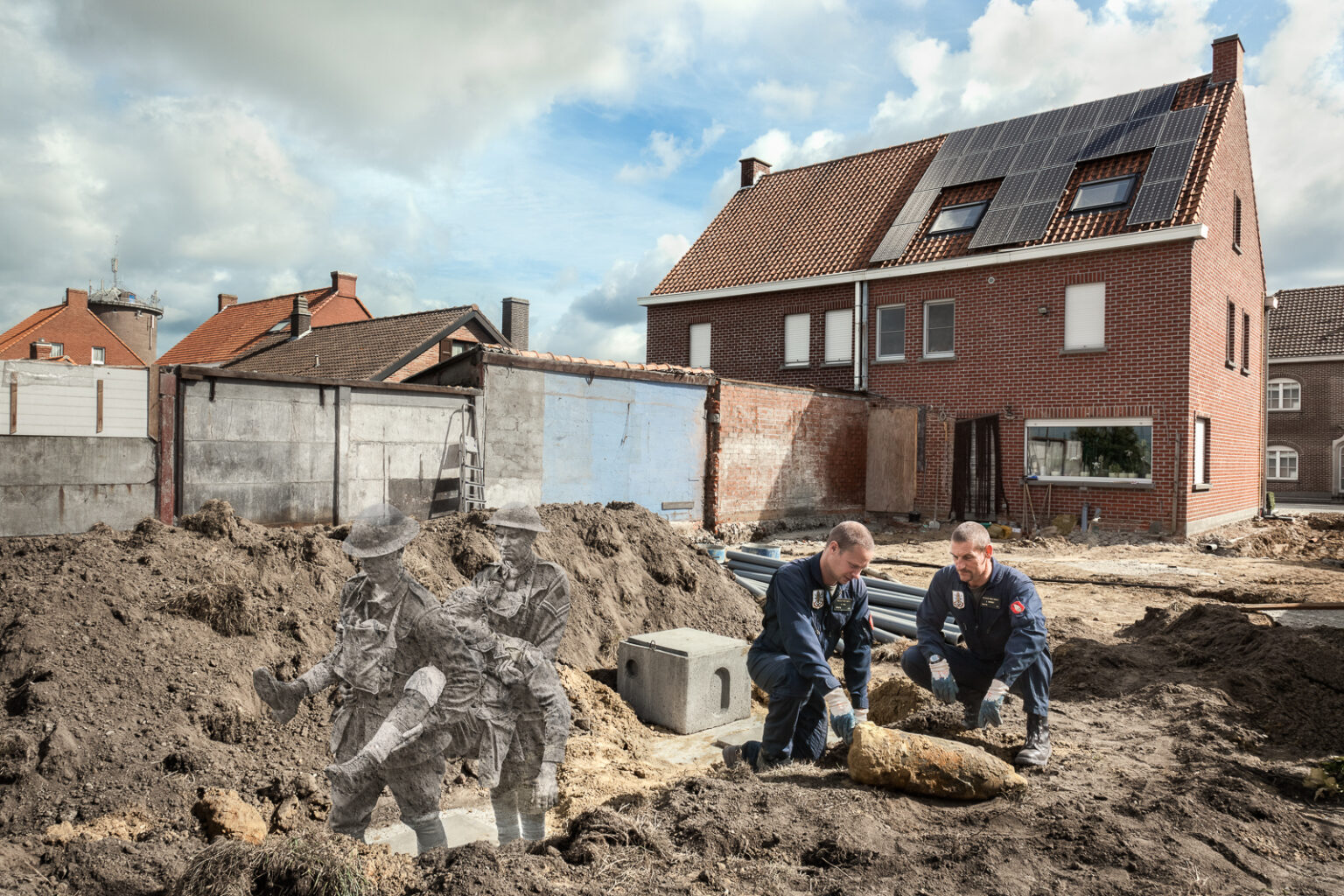
Image Title : #Flanders 5267
An 8” British high-explosive shell is recovered from drainage works being undertaken in the back garden of a house in modern day Passchendaele. For the residents of West Flanders, such finds are commonplace.
In 1920, Julia Goulding of Brisbane, Queensland, wrote to the AIF headquarters in London:
‘I am writing to enquire of my son John Joseph GOULDING No555. B Company 31st Battalion AIF who was reported missing since July 19th 1916… I have waited patiently with an aching heart for news of him… I know he was not the only one by thousands, but he was my son, lent to me for 35 years… The suspense is what makes it so hard’
In March 2012, her son’s remains were discovered in a mass grave of allied soldiers near Fromelles, France.
United Nations, December 2015, and Artist Ian Alderman in discusses Recovering The Past with Belgium’s Princess Astrid and Deputy Prime Minister Didier Reynders
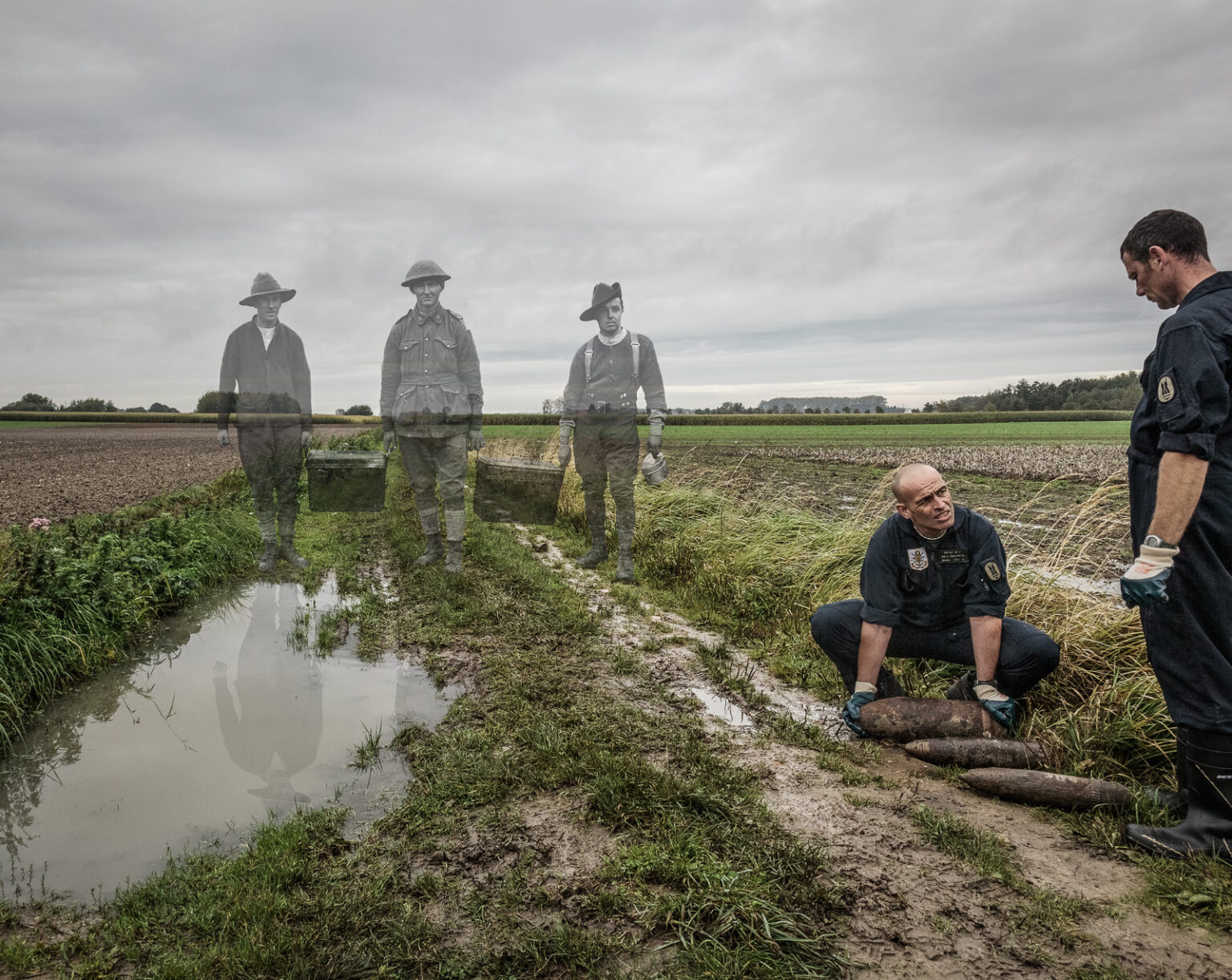
Image Title : #Flanders 1512
Flanders seemingly conventional flat landscape gives clues to its more sinister nature after periods of rain. Through a combination of a landscape destroyed through bombardment and prolonged periods of heavy rain, countless men and mules drowned in the morass at Passchendaele.
“She was quite mad, the awful sights had turned her brain.”
Matron Gertrude Moberly referring to an unnamed nurse of the Australian Army Nursing Service (AANS)

